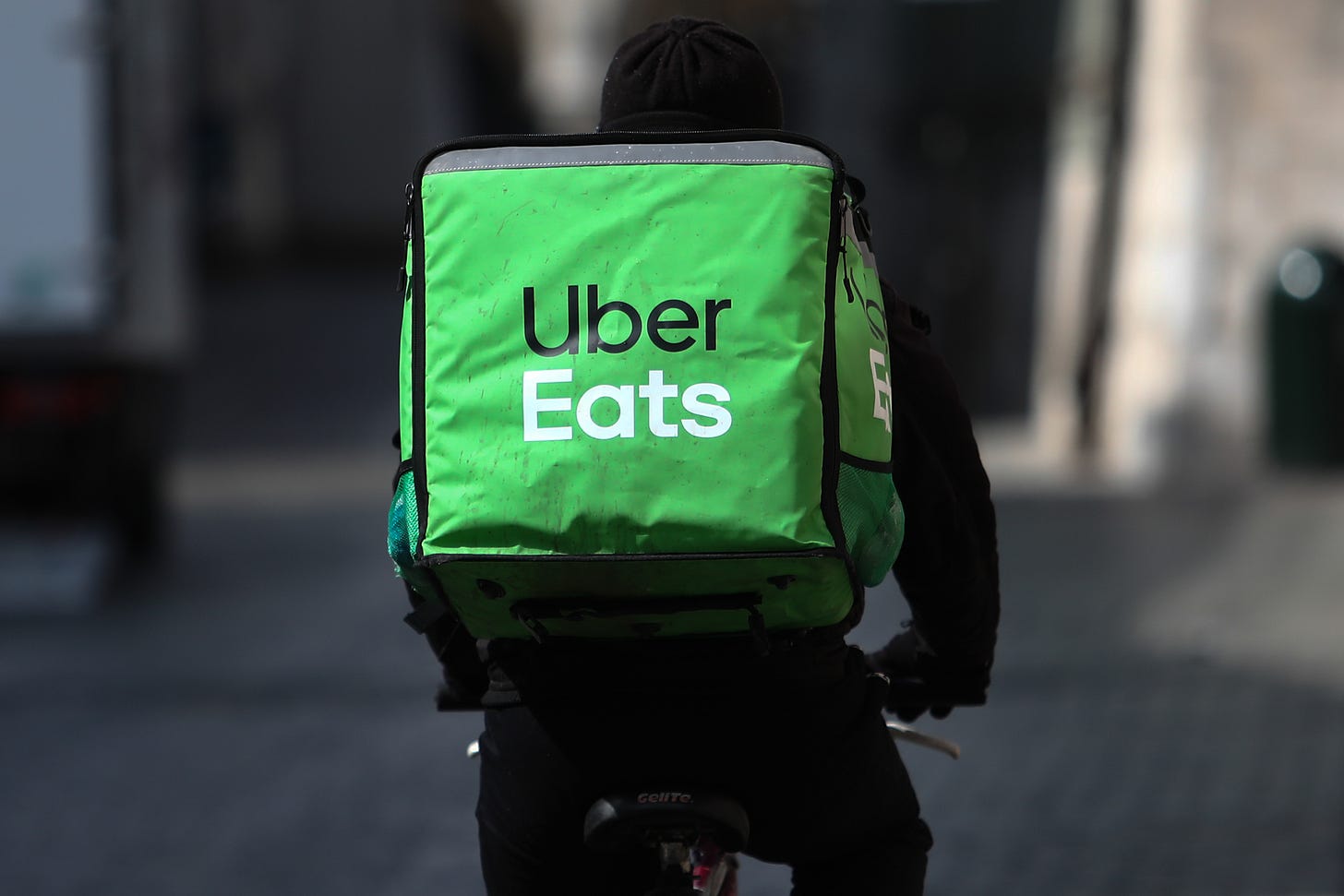The food delivery fee compromise
After failing to sue fee caps out of existence, companies are rewriting the rules instead
In the first half of 2020, a handful of major U.S. cities passed emergency measures capping the fees that food delivery platforms like Grubhub, DoorDash, and Uber Eats could charge to restaurants. The caps, usually set at 15% of the cost of an order, were intended to help the restaurant industry survive that devastating first phase of covid, which brought in-person dining to a sudden halt. Food delivery apps offered a lifeline to restaurants restricted to takeaway and delivery, but many balked at the hefty fees these platforms charged them.
Protecting local economies was a popular early covid priority and with restaurants a particularly prominent victim, legislators sprung into action. Within a few months, cities from San Francisco to Seattle to New York had all passed emergency caps on the fees food delivery platforms could charge. By the end of 2021, more than 50 jurisdictions in the U.S. had at various points placed some sort of price control on food delivery apps in response to covid, most of them temporary measures designed to lapse whenever the local state of emergency ended. I’ve rounded up as many of these as I could find in a table below, organized by date first enacted. (If you spot one I missed, drop it in the comments or send me an email.)
Here in summer 2022, covid is still raging, thanks to staggering infection levels that give the virus plentiful opportunities to mutate, but lockdowns and mitigation measures like widespread masking seem to be a thing of the past. Something like normal life has resumed. Restaurants have re-opened, people are back to dining in person, and many of those food delivery caps have indeed lapsed as originally intended. But in several very important food delivery markets, fee caps have stuck.
Companies like Grubhub, DoorDash, and Uber Eats are now facing the very real possibility that in some of their biggest and most profitable markets, fee caps may be here to stay. San Francisco made its 15% cap permanent in July 2021 and New York City followed suit in August. Minneapolis made its fee cap permanent in December 2021. This June, Portland city council voted unanimously to extend its 10% fee cap through February 2023. And just two weeks ago, Seattle city council proposed making its 15% delivery fee cap permanent.
With efforts to dismantle these caps through lawsuits (San Francisco, New York) so far proving unsuccessful, companies are now working to rewrite the rules instead. On Tuesday (July 26), the San Francisco board of supervisors passed an ordinance that gives companies a way around the 15% cap, without gutting it entirely, in exchange for DoorDash and Grubhub dropping their lawsuit against the city. Starting Jan. 31, 2023, SF’s amended rules let third-party delivery platforms charge restaurants above the cap for “additional services” like advertising, search optimization, and credit card processing so long as they also offer a “core delivery service” option for a max of 15%.
This is the food delivery fee compromise: a 15% cap for delivery and the basic requirements of listing a restaurant on your platform, and more for anything else. The legislation being considered in Seattle contains similar language, as did an amendment to fee limits adopted by Philadelphia in December 2021. It’s the unbundling of food delivery platform services.
It’s unclear exactly how this will change things for restaurants. Uber, for example, already offers restaurants the option to pay for ads, run promotions, and create customer loyalty programs. Perhaps some of those services will get more expensive or start requiring a fee to access. The obvious concern is that the new rules create a pay-to-play environment on food delivery apps, a fast lane that could bury establishments that choose not to pay extra for additional services. If Joe’s Pizza doesn’t pay more than 15% to DoorDash, will it start losing online customers to Sally’s? The 15% will be normal airport security—a condition of boarding—and the more expensive extras PreCheck and Global Entry. You don’t have to pay for faster security checks, but at some point if you use the system enough, maybe you do.
For delivery companies, the fee compromise is a clear win. The option to unbundle and charge separately for services like advertising and SEO on top of delivery is obviously better than being restricted to a flat 15% cap. DoorDash in its 2021 annual report warned in no uncertain terms that fee caps “have had in the past, and are likely to have in the future, an adverse effect on our results of operations.” Fee caps are also among the reasons that European food delivery giant Just Eat Takeaway soured on its acquisition of Grubhub, noting in its 2021 full year results that mandatory fee caps in the U.S. and Canada “had a significant impact of €192 million on adjusted EBITDA.”
The delivery fee compromise also adds a new twist to the antitrust complaint against Grubhub, Uber, and Postmates. That case alleges that high food delivery platform commissions combined with restrictive contractual terms drive up prices for diners both on apps and everywhere else, including in the restaurants themselves. At the heart of that lawsuit is restrictive terms in the contracts between delivery platforms and restaurants known as most-favored nation provisions, but the complaint is underpinned by the allegation that platforms charge commissions that match or exceed typical restaurant profit margins. If 15% fee caps with opt-outs become the new delivery fee norm, that may no longer be the case.






